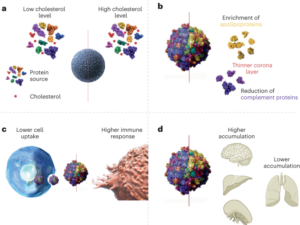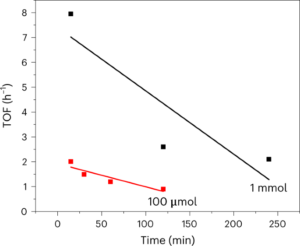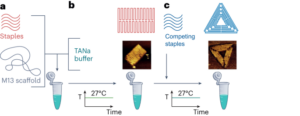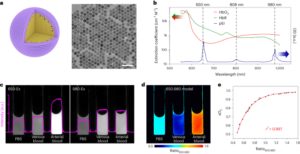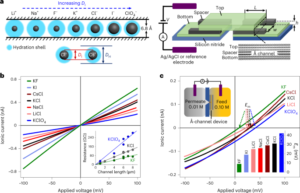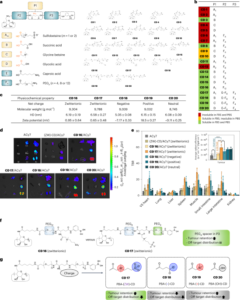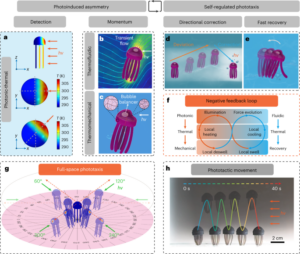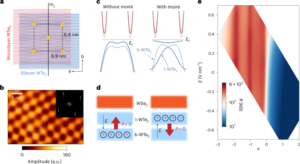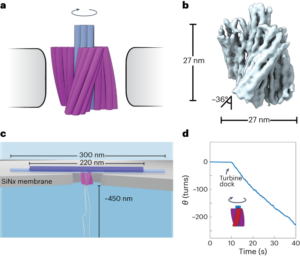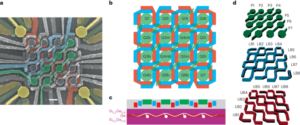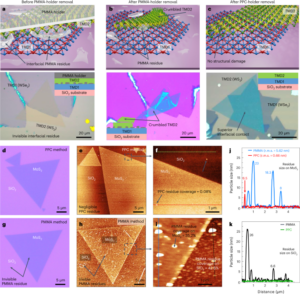Technological progress stems from a mutual appreciation of research and development goals.
The impact of academic papers for research done in an applied field, where commercially viable products are already in the market (for example, rechargeable batteries), should not simply rely on counting the number of citations. Instead, impact should also aim at measuring practical use.
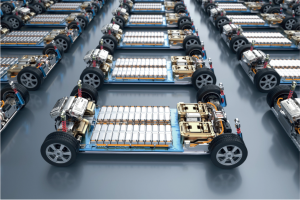
Credit: Kittipong Jirasukhanont / Alamy Stock Photo
Typically, the main concerns of academic researchers are to boost their curriculum and secure funding to run their laboratories. When the laboratory rests on solid financial ground, they can then devote more attention to other duties, such as mentoring, teaching, writing and, hopefully, producing great science. Unfortunately, the mechanism by which academic researchers are rewarded is by large still based on the ‘publish or perish’ philosophy approach (number of papers published, number of citations accrued, impact factor of the journal, etc.). This perverse mechanism encourages hyping and it is especially deleterious to applied research fields, where instead large-scale adoption of a certain product is king. Some time ago, we suggested that the number of citations received by an academic paper in patents could be a measurable, easy-to-understand proxy, albeit not entirely accurate (but neither are any of the other metrics used to measure researchers’ output)1.
In a recent peer-reviewed Perspective article2, scientists and analysts from Volta Energy Technologies, Scania and Sphere Energy (three companies dealing with battery technology at a large-scale level) raise critical points that are valuable to all involved in battery research, academics in particular. One of the main messages the authors want to get across is to remind academics how far-removed their research is from the end-users. In the best-case scenario, an academic paper may report findings at a technology readiness level (TRL) of 4–5, where prototype lab-scale cells (for example, in pouch format) can deliver a capacity in the 0.3–1 Ah range. Reaching industrially relevant TRLs of 8–10 (from large-scale battery manufacturing processes to widespread adoption) requires a scalable, cost-effective, safe and supply-chain-robust technology. These considerations, which require extensive investment of time and resources, are not generally included in academic papers. Yet, the literature, and associated press releases, are touted with promises of ever more ground-breaking battery technologies.
At Nature Nanotechnology, we are aware of this tendency to sometimes oversell one’s research findings. For this reason, we make sure that claims are always justified. We remove hyperbolic expressions (for example: no paradigm shifts, no new avenues of investigations, no unprecedented performances, and certainly no holy grails), as we believe that science should speak for itself. When the title makes qualitative claims, mostly in the form of an ‘ultra-X performance’, we ensure this is promptly quantified in the abstract; else, we remove it from the title. We have also been adopting the recommendations expressed in a 2019 Perspective when evaluating performance-based battery papers3. Additionally, there are at least another couple of meaningful things that authors could do to avoid false optimistic expectations. For example, in research articles dealing with TRLs up to 4–5, authors should refrain from accentuating big societal problems, because a low-TRL research article will not solve any of them; plus, these issues are not specific to one paper. Instead, we believe authors should propose an informed opinion about how their material, chemistry, approach or performances can achieve the next TRL level. For many articles with a performance focus, the next TRL level means being able to demonstrate reliable safety and performance data for hundreds of cells (A-level prototyping)2.
As a journal also attentive to technological advances, Nature Nanotechnology welcomes papers where rigorous scale-up testing on novel chemistries and materials goes beyond the usual lab-scale characterization4 and complies with international testing recommendations.
However, while academic researchers should do more to feed into the needs of the industry, the industry should help by making their findings more accessible. It is not helpful to blame academics for not being transparent and then hide behind patents and press releases. A patent is a legal document unintelligible to academics by large, whereas press releases are not an appropriate means of communicating scientific findings. Industry researchers should make the extra effort to disseminate their results in peer-reviewed journals if the common goal is to advance applied research faster and more efficiently. A way to inform an academic reader of important patents could be also to produce a short, two-page technical ‘research summary’ written in plain English with the contact of the inventors. This kind of document would also be helpful for journal editors, considering the non-trivial tasks of finding reviewers with industrial expertise.
At Nature Nanotechnology, we are interested in highlighting successful technology development stories5 where a nanomaterial, or nanoscale understanding has led to improvements that made it far into the TRL scale. These stories could benchmark the expectations of the academic community (both authors and readers) against their lab-scale findings and performances, helping to tame the tendency to oversell results.
- SEO Powered Content & PR Distribution. Get Amplified Today.
- Platoblockchain. Web3 Metaverse Intelligence. Knowledge Amplified. Access Here.
- Source: https://www.nature.com/articles/s41565-023-01338-x
- 1
- 11
- 2016
- 2018
- 2019
- 2022
- 2023
- 39
- 420
- a
- Able
- About
- ABSTRACT
- Academia
- academic
- accessible
- accurate
- Achieve
- across
- Additionally
- Adopting
- Adoption
- advance
- advances
- against
- All
- already
- always
- Analysts
- Anchor
- and
- Another
- applied
- appreciation
- approach
- appropriate
- article
- articles
- associated
- attention
- authors
- based
- batteries
- battery
- because
- behind
- being
- believe
- Benchmark
- Beyond
- Big
- boost
- Capacity
- Cells
- certain
- certainly
- chemistry
- claims
- collaborate
- commercially
- Common
- communicating
- community
- Companies
- Concerns
- considerations
- considering
- contact
- cost-effective
- could
- Couple
- credit
- critical
- Curriculum
- data
- dealing
- deliver
- demonstrate
- Development
- document
- Editorials
- effectively
- efficiently
- effort
- encourages
- energy
- English
- ensure
- entirely
- especially
- etc
- Ether (ETH)
- evaluating
- EVER
- example
- expectations
- expertise
- expressed
- expressions
- extensive
- extra
- faster
- field
- Fields
- financial
- finding
- Focus
- form
- format
- from
- funding
- generally
- get
- goal
- Goals
- Goes
- great
- Ground
- ground-breaking
- help
- helpful
- helping
- Hide
- highlighting
- Hopefully
- How
- HTTPS
- Hundreds
- Impact
- important
- improvements
- in
- included
- industrial
- industry
- informed
- instead
- interested
- International
- Inventors
- Investigations
- investment
- involved
- issues
- IT
- itself
- journal
- Kind
- King
- laboratory
- large
- large-scale
- Led
- Legal
- Level
- LINK
- literature
- made
- Main
- make
- MAKES
- Making
- manufacturing
- many
- Market
- material
- materials
- meaningful
- means
- measure
- measuring
- mechanism
- mentoring
- messages
- Metrics
- more
- mutual
- Nature
- needs
- Neither
- New
- next
- novel
- number
- ONE
- Opinion
- Optimistic
- Other
- Paper
- papers
- paradigm
- particular
- patent
- Patents
- peer-reviewed
- performance
- performances
- perspective
- philosophy
- Plain
- plato
- Plato Data Intelligence
- PlatoData
- plus
- points
- Practical
- press
- Press Releases
- problems
- processes
- produce
- Product
- Products
- Progress
- promises
- propose
- prototype
- prototyping
- proxy
- published
- qualitative
- raise
- range
- reaching
- Reader
- readers
- Readiness
- reason
- received
- recent
- recommendations
- Releases
- relevant
- reliable
- remove
- report
- require
- requires
- research
- research and development
- researchers
- Resources
- Results
- rewarded
- rigorous
- Run
- safe
- Safety
- scalable
- Scale
- scale-up
- scenario
- Science
- scientists
- secure
- Shifts
- Short
- should
- simply
- societal
- solid
- SOLVE
- some
- speak
- specific
- stems
- Still
- stock
- Stories
- successful
- such
- tasks
- Teaching
- Technical
- technological
- Technologies
- Technology
- Technology Development
- Testing
- The
- their
- things
- three
- time
- Title
- to
- touted
- transparent
- understanding
- unprecedented
- use
- Valuable
- viable
- Welcomes
- which
- while
- widespread
- will
- would
- writing
- written
- zephyrnet

